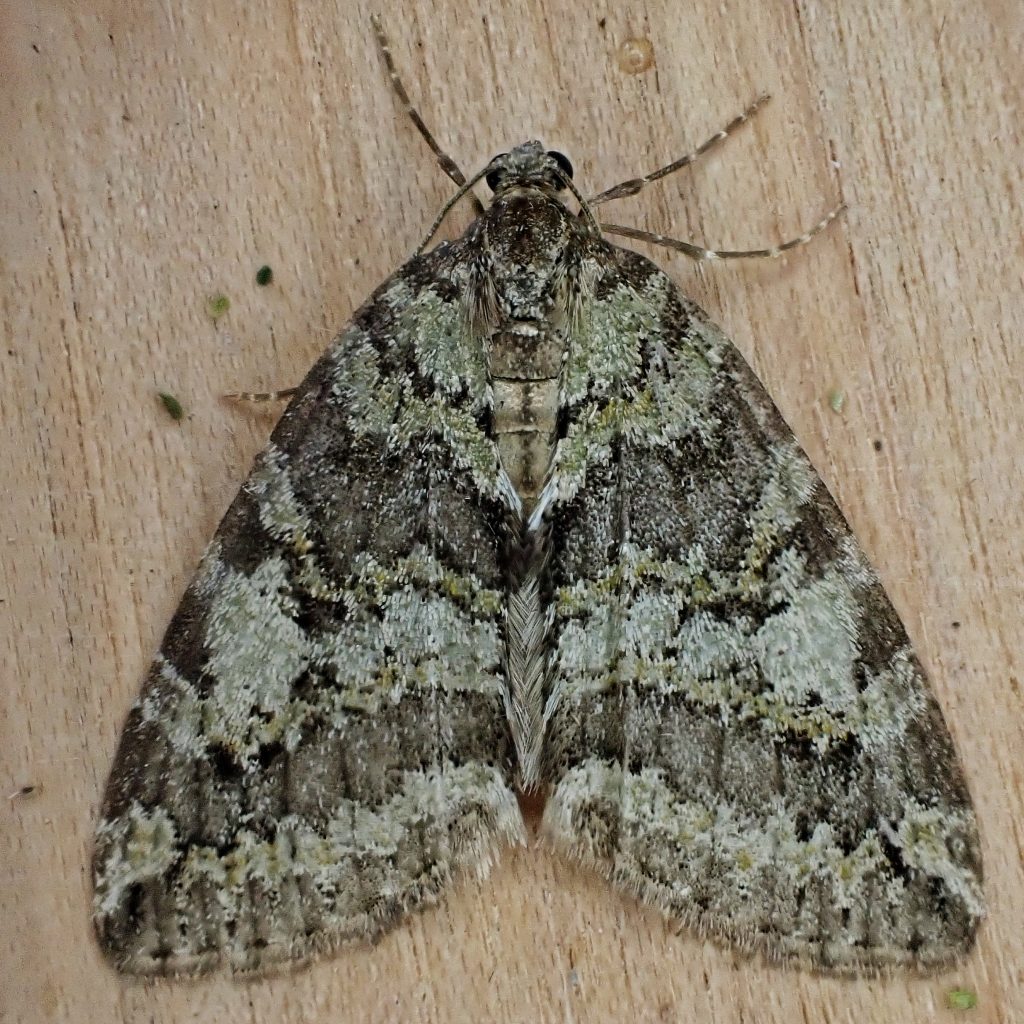
Hydriomena sp. moths are very tough to positively identify. So I’m extremely grateful for the experience and expertise of Tomas Mustelin who, for only the 2nd time in our acquaintance, confirmed that I was correct in my initial identification of a Hydriomena, agreeing that this moth is Hydriomena nubilofasciata!
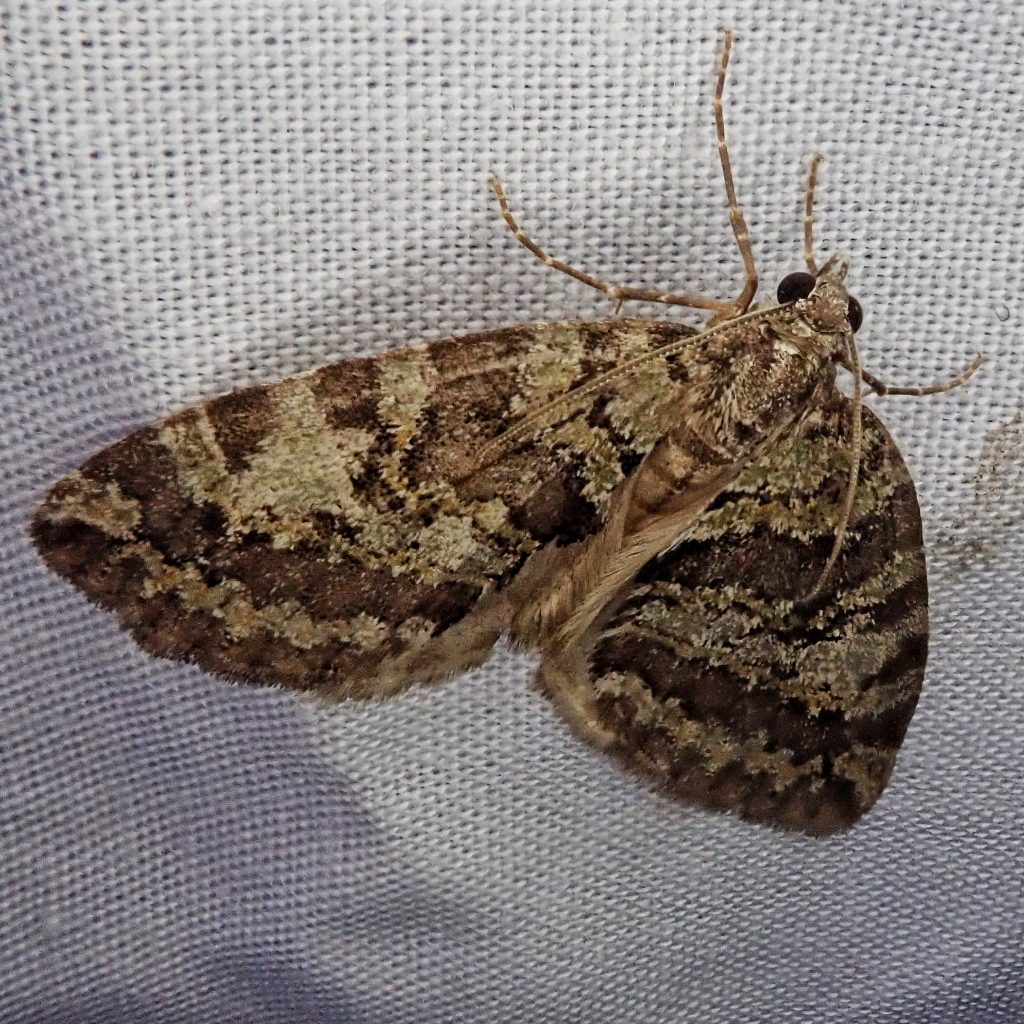
There are two main reasons why Hydriomena are difficult to identify. The first is that most of them have some variation of alternating dark and light bands of color with scalloped to jagged outlines, and are lightest colored in the median area. And it is a busy pattern. For these reasons Hydriomena as a genus is easily recognized. But within each species is a range of variation such that most specimens one finds have a reasonable match within the range of several other species. There is an interesting research paper (Schachat, 2019) that discusses that, but what it boils down to is that the forewing pattern in Hydriomena cannot be predicted based on wing venation. If you want to see some of the variation just in the Oak Winter Highflier Moth, check out this selection on BugGuide.
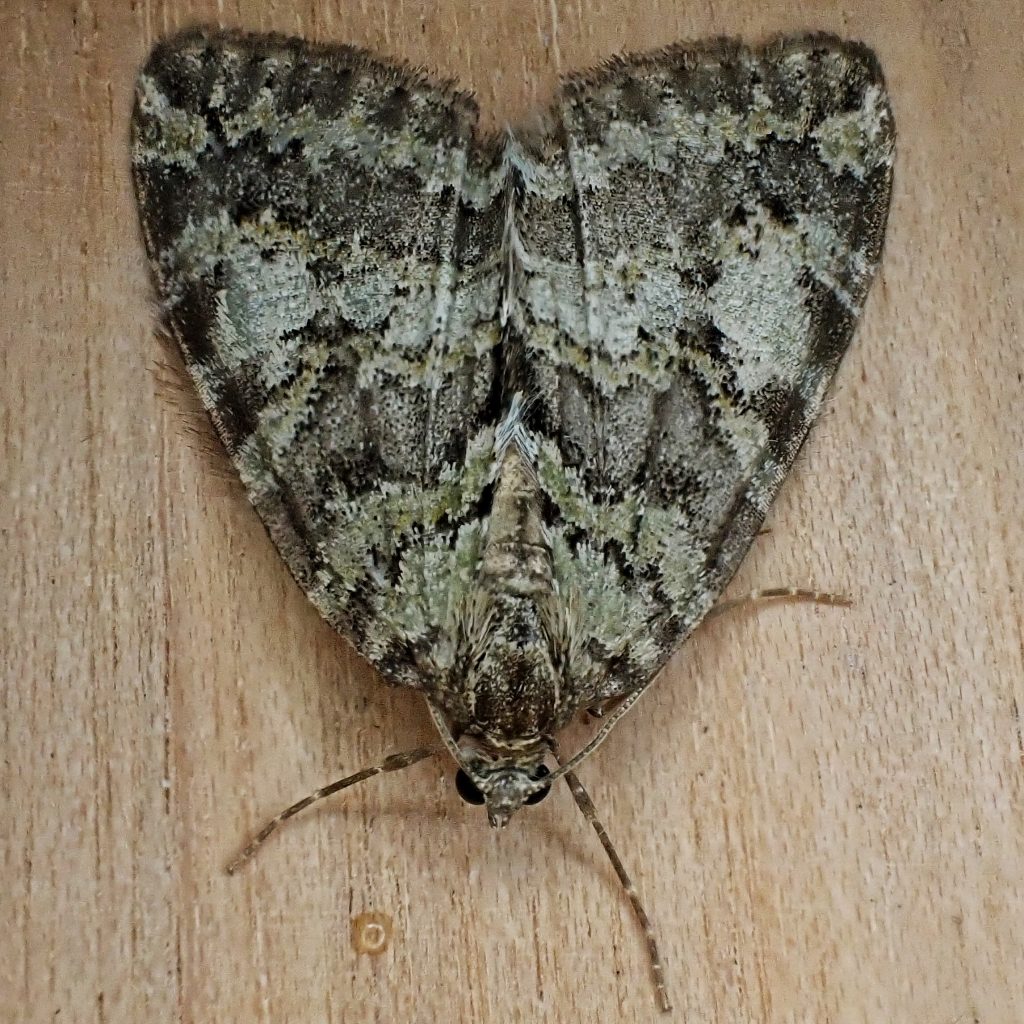
I was so frustrated after my first few attempts to identify a Hydriomena that I gave up on them for awhile. But last summer I had several during one night that seemed to be fresh, the same size, and had some very similar underlying traits. So I photographed them all, and the next day with a large cup of strong tea, two phones, a computer, and a couple books (should have added a bottle of aspirin) I pored over hundreds of photos until I came to a conclusion. It was wrong, of course, but Tomas corrected me, and at least I had been right that they were all the same species.
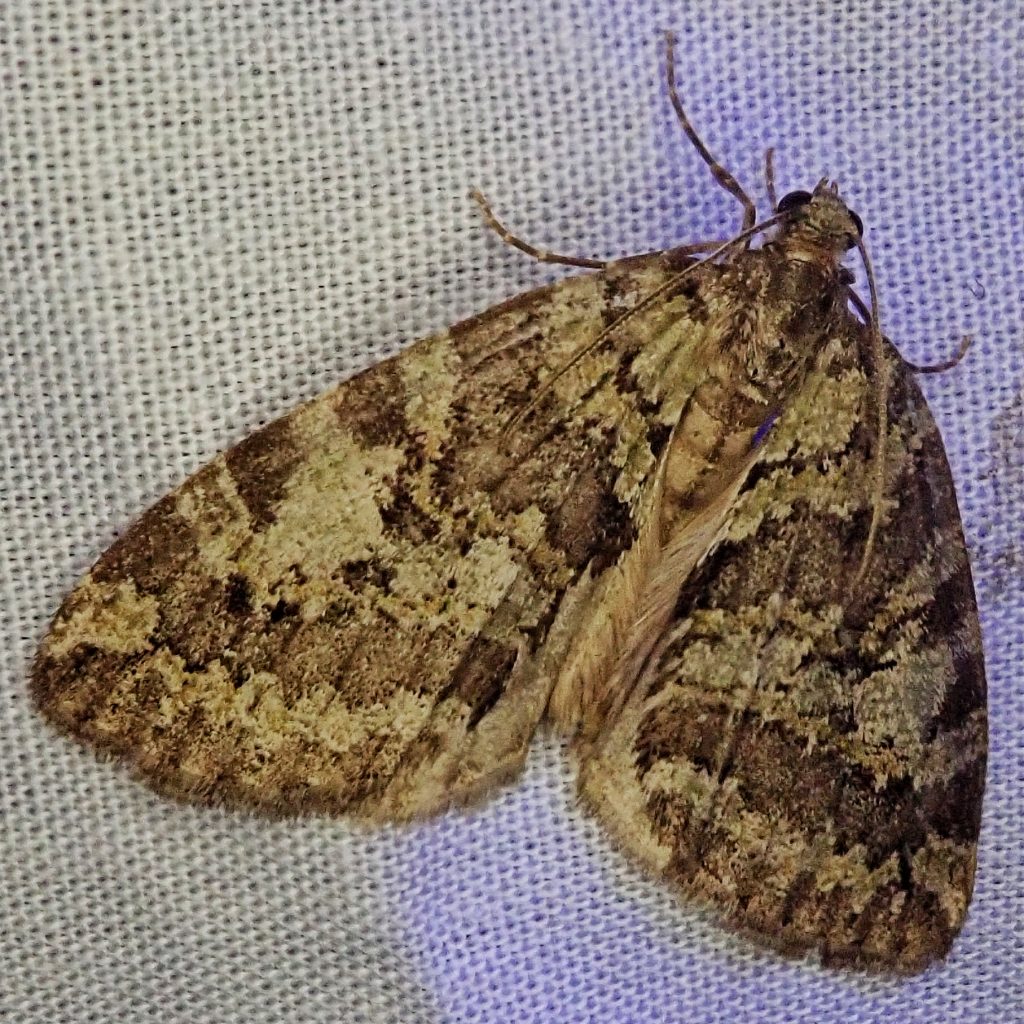
And I realized that the ‘trick’ simply involved experience and, just like the old saw about ‘how do you get to play Carnegie Hall? Practice, practice, practice’. So that, oddly enough, I was actually excited to find this Hydriomena nubilofasciata at my lights. This is the moth I spoke of yesterday as one I’d seen before, but never bothered to identify. But this time I did make the effort, and was rewarded with a rare success, which will fuel my willingness to make that effort again.
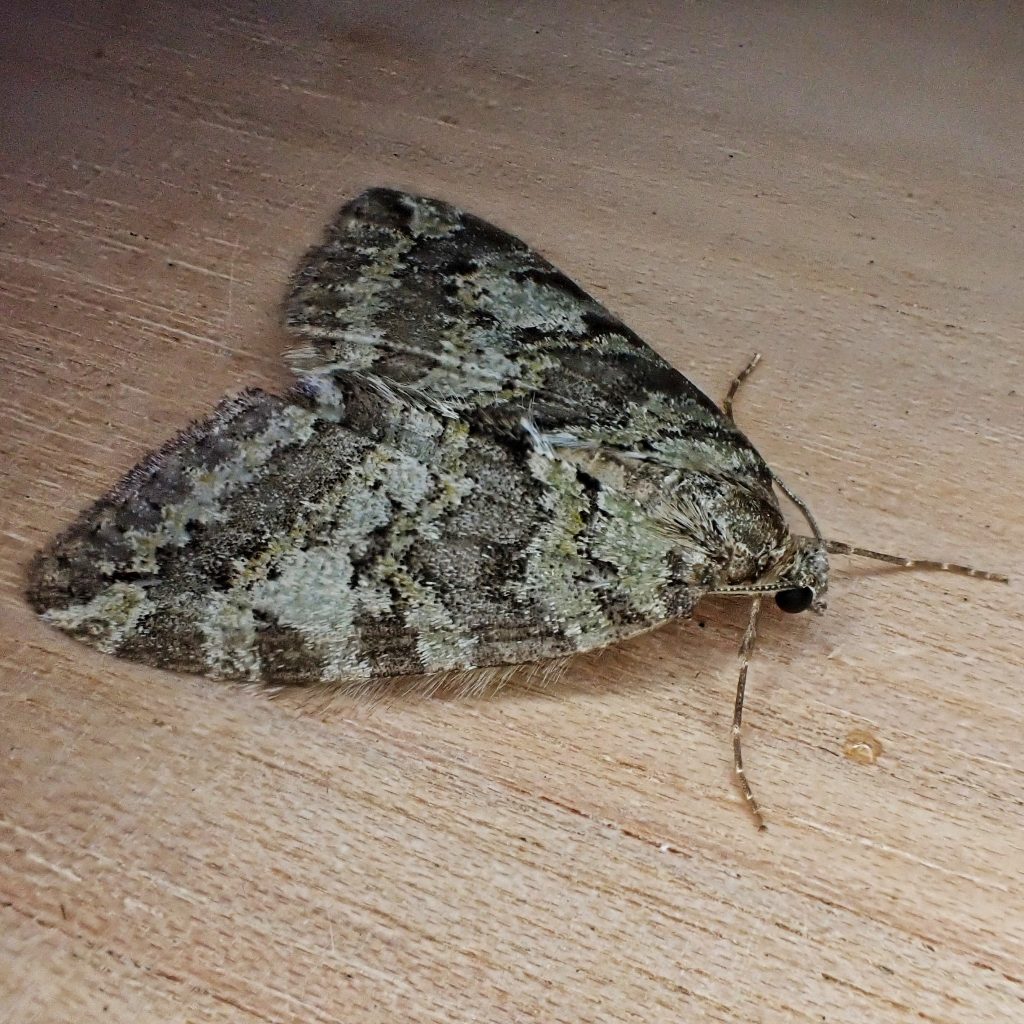
And, while I would never deny that solving the puzzle of identification is not only compelling but highly satisfying, that is just the key that unlocks more interesting information, and more mysteries. Now that I have a name I know their flight season is early, so I can hypothesize that that gives them an advantage by avoiding spring migrating birds. And I know the caterpillars are oak obligate, and prefer to dine inside leaf buds, which gives them a good hiding place. And that they change color from black to green as the leaves are opening out, which gives them better camouflage. And that shortly after this they pupate in a well camouflaged cocoon right around the time that the numbers of migrating birds makes a large leap. So, by solving the puzzle of their name, I open a window which not only gives me a larger view of their life, but also lets me see some of the relationships this ephemeral creature has with its ecosystem. And that is the most satisfying prize of all.
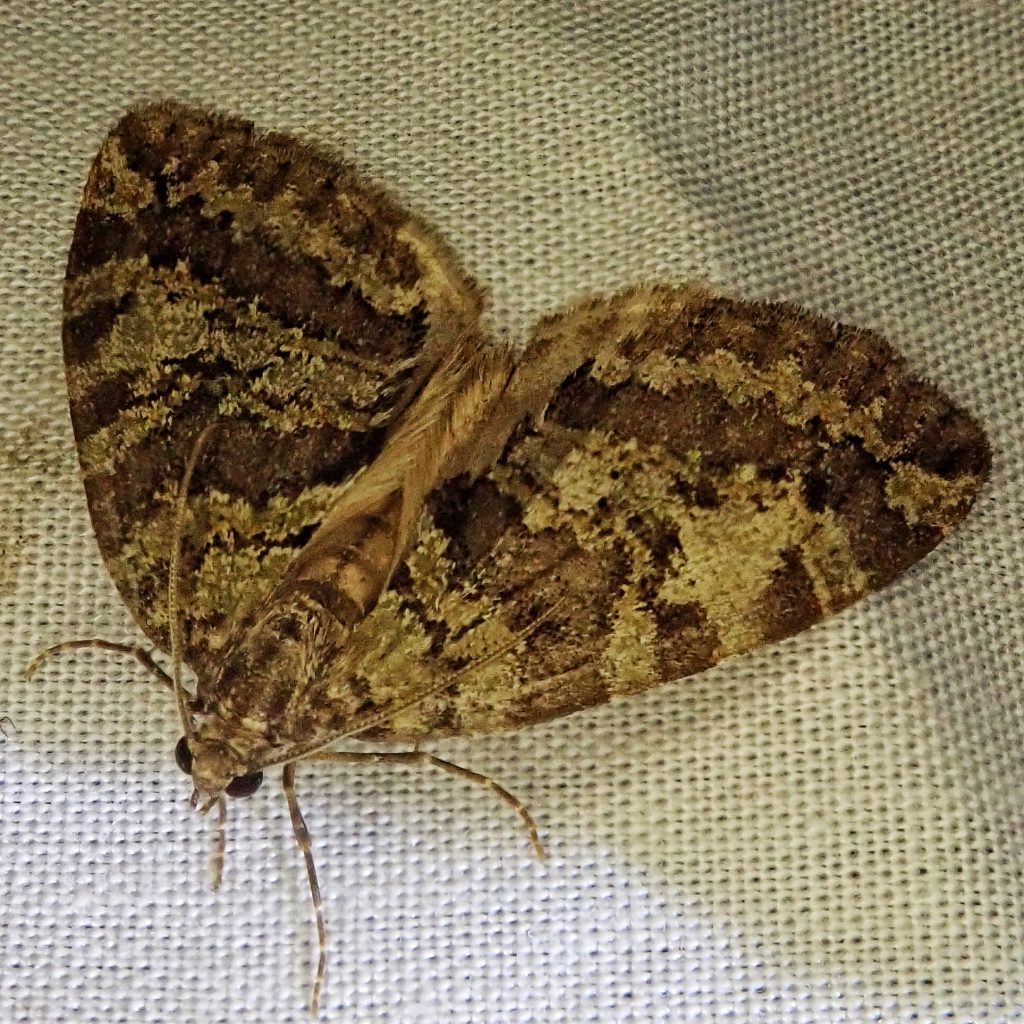
Description– Highly variable; medium sized moth (fw length 13-16mm); ‘typical’ H. nubilofasciata have alternating grey and greenish gold bands with somewhat jagged outlines; postmedial line curves smoothly and then juts forward near the costa- this is the only fairly universal defining trait in this species, and the biggest reason I correctly identified this specimen.
Similar species– All Hydriomena look superficially the same, and yet, even in the same species, no two look exactly alike.
Habitat-Oak woodlands
Range-West Coast endemic; Found west of the Cascades and in the Columbia River Gorge in our region.
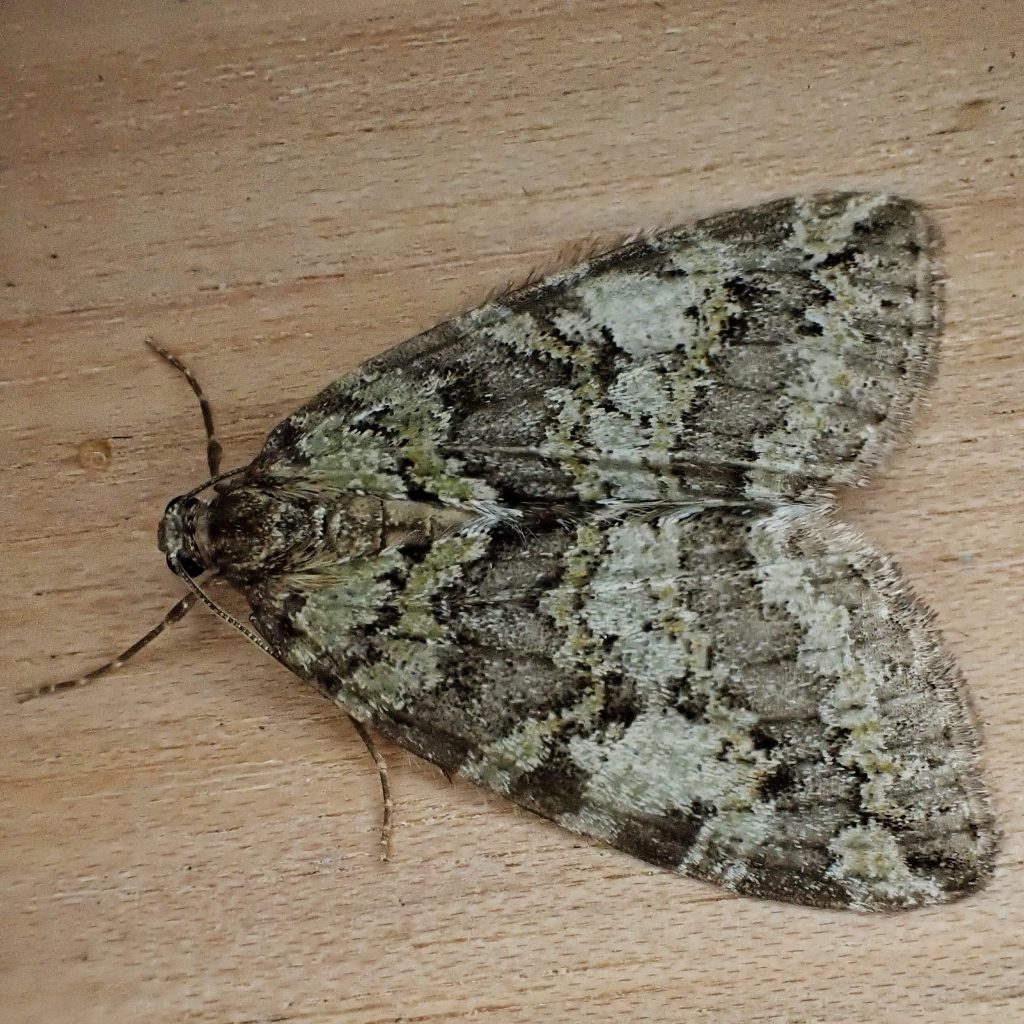
Eats– Larvae are specialists feeding on oaks (Quercus)
Eaten by– Probably any insectivore that can find and catch them.
Reproduction-Eggs are laid on oak twigs, usually early in the season; larvae enter pupation in early summer, and eclipse the following late winter/early spring.
Adults active– Mid January to late April
Etymology of names–Hydriomena means either ‘water moon’ or ‘water jug moon’ in Latin, but I have no idea what that refers to. The specific epithet nubilofasciata is from the Latin for ‘cloudy bands’ and refers to the grey bands along the antemedial and postmedial lines.
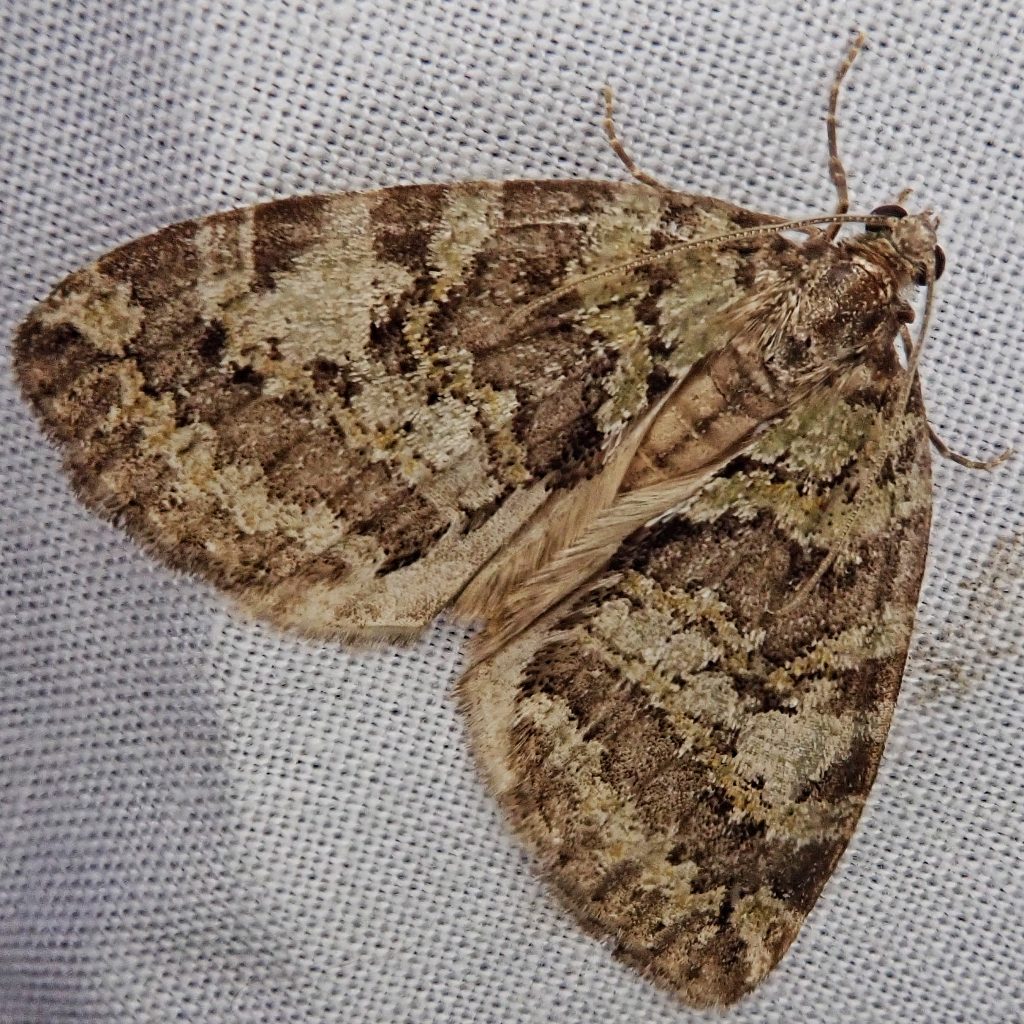
https://bugguide.net/node/view/43952
https://journal.entsocbc.ca/index.php/journal/article/download/2359/2423
http://mothphotographersgroup.msstate.edu/species.php?hodges=7276
